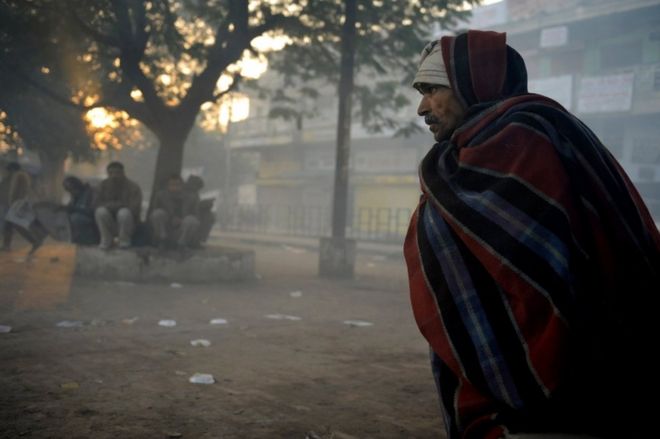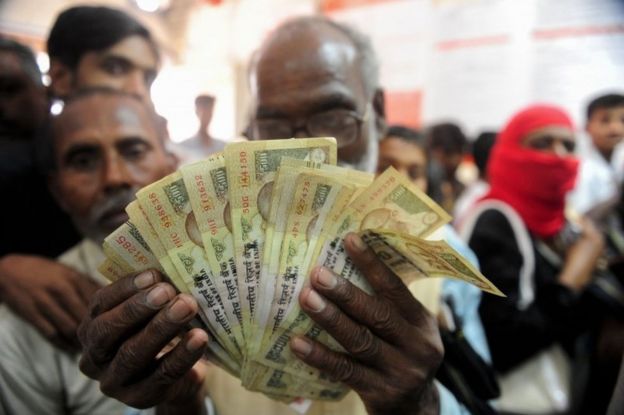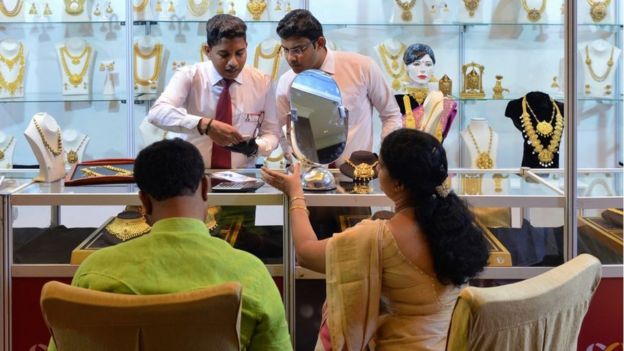Actually you are wrong again.
 Why inequality in India is at its highest level in 92 years
Soutik Biswas
Why inequality in India is at its highest level in 92 years
Soutik BiswasIndia correspondent
Image copyrightAFP
Image captionIndia still remains one of the poorest countries in the world
Did India's economic reforms lead to a sharp rise in inequality?
New research by French economists Lucas Chancel and Thomas Piketty, author of Capital, the 2013 bestselling book on capitalism and increasing inequality, clearly points to this conclusion.
They studied household consumption surveys, federal accounts and income tax data from 1922 - when the tax was introduced in India - to 2014.
The data shows that the share of national income accruing to the top 1% of wage earners is now at its highest level since Indians began paying income tax.
The economists say the top 1% of the earners captured less than 21% of the total income in the late 1930s, before dropping to 6% in the early 1980s and rising to 22% today. India, in fact, comes out as a country with one of the highest increase in top 1% income share concentration over the past 30 years," they say.
To be sure, India's economy has undergone a radical transformation over the last three decades.
Up to the 1970s, India was a tightly regulated, straitlaced economy with socialist planning. Growth crawled (3.5% per year), development was weak and poverty endemic.
Some easing of regulation, decline in tax rates and modest reforms led to growth picking up in the 1980s, trundling at around 5% a year. This was followed by some substantial reforms in the early 1990s after which the economy grew briskly, nudging close to double digits in the mid-2000s.
Image copyrightAFP
Image captionLast November's controversial cash ban slowed down the economy
Growth has slowed substantially since then, but India still remains one of the fastest-growing economies in the world. The ongoing slowdown -
growth was 5.7% in the April-June quarter, the slowest pace in three years - largely triggered by feeble demand, a
controversial cash ban, declining private investment and weak credit growth, is a cause for concern.
And the need for fast-paced growth, according to Nobel Prize winning economist Amartya Sen, is "far from over since India, after two decades of rapid growth, is still one of the poorest countries in the world".
From their latest work on income inequality, Lucas Chancel and Thomas Piketty contend that there has been a "sharp increase in wealth concentration from 1991 to 2012, particularly after 2002". Also, they conclude, India has only been really shining for the top 10% of the population - roughly 80 million people in 2014 - rather than the middle 40%.
The economists plan to release the first World Inequality Report, produced by a network of more than 100 researchers in December, where they will compare India's inequality with other countries and suggest ways to tackle it.
Striking transition
They agree that unequal growth over a period of time is not specific to India, but market economies are not bound to be unequal. India's case is striking in the fact that it is the country with the highest gap between the growth of the top 1% and that of the full population. Incomes of those at the very top have actually grown at a faster pace than in China.
The economists contend that the growth strategy pursued by successive governments has led to a sharp increase in inequality. China also liberalised and opened up after 1978, and experienced a sharp income growth as well as a sharp rise in inequality. This rise was however stabilised in the 2000s and is currently at a lower level than India.
In Russia, the move from a communist to a market economy was "swift and brutal" and today has a similar level of inequality to India.
"This shows that there are different strategies to transit from a highly regulated economy to a liberalised one. In the arrays of possible pathways, India pursued a very unequal way but could probably have chosen another path," Dr Chancel told me.
Image copyrightGETTY IMAGES
Image captionIndia's economy grew at its slowest pace for three years in the April-to-June quarter
While inequality is rising in most parts of the world, certain countries are resisting this trend. For example, he says, the rise in inequality is much lesser in western Europe than in the Anglo-Saxon world or in emerging markets.
"This largely owes to social security mechanisms that are relatively more favourable to workers than capital as compared to other parts of the world, to relatively more efficient tax systems and government investment in public goods such as education, housing, health or transport."
Clearly, the new research should help promote a vigorous debate on what more can be done to promote more inclusive growth in India and the need for more transparent income and wealth data.
https://www.bbc.com/news/world-asia-india-41198638
Listen false flagger put on your true flags. Give me proof that the economy has shrunk you idiot.
Yeah because Dawn is anti-Pakistan, you idiot.











